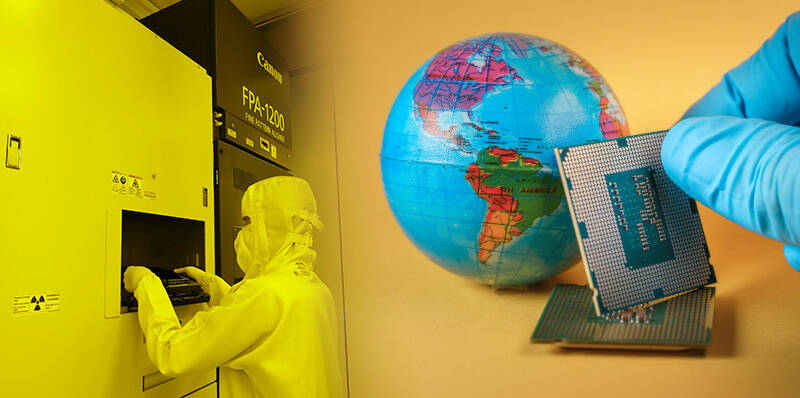Canon Claims Its Nanoimprint Litho Machines Capable Of 5nm Chip Production

When it comes to producing the most advanced chips, Dutch semiconductor manufacturing equipment maker ASML has had the market on lock. However, fresh lithography tech from Canon may soon challenge that position.
On Friday, the Japanese multinational, best known for its high-end camera systems, announced a nanoimprint lithography (NIL) machine that it claims is capable of producing parts down to a 5nm process node. With further refinement, Canon claims it could eventually produce 2nm parts. We're assuming Canon will be able to achieve an acceptable yield and low-defect rate to make all of this useful.
This would make it competitive with ASML's extreme ultraviolet lithography (EUV) kit. The Dutch vendor is the sole supplier of EUV used in the manufacturing of chips below 7nm. Perhaps more tantalizing, Canon's NIL tech — which doesn't rely on complex optics or mirrors used in EUV applications — could skirt existing US curbs on the export of high-end chipmaking equipment to China.
As you may recall, America has pressured its allies in Korea, Japan, and the Netherlands to follow its example and bar or limit the sale of most deep ultraviolet (DUV) and EUV machines to China.
Canon's nanoimprint tech works by physically pressing a mask imprinted with a circuit design onto the resist layer of the chip die wafer like a stamp.
"Because its circuit pattern transfer process does not go through an optical mechanism, fine circuit patterns on the mask can be faithfully reproduced on the wafer. Thus, complex two- or three-dimensional circuit patterns can be formed in a single imprint," Canon explained in its bumf.
This differs from photolithography techniques used by ASML and others that involve passing specific wavelengths of light through photomasks to etch features on a pattern layer on the wafer. The ultimate goal is crafting intricate, high density circuitry on the chip dies.
- Samsung nabs contract to produce 3nm server chips for mystery US biz
- Beijing-backed server chip startup formed by ex-Arm China execs
- Latest SiFive RISC-V cores aim to boost performance, accelerate AI workloads
- US allows Samsung and SK hynix to keep making chips in China
But while Canon claims its tech can produce chips down to the equivalent of a 5nm process, Gartner analyst Gaurav Gupta remains skeptical. "I would be surprised if there is a major technical breakthrough that Canon has suddenly achieved," he told us.
Nanoimprint lithography (NIL) as a concept has been around for a while, he explained, but the technique has been plagued by challenges with defects, overlay, and throughput.
"We don't expect commercial impact before five years and to start primarily with memory chips," he told The Register. "There is a big gap in research and development or concept capability at leading-edge nodes… vs. high-volume execution and [being] manufacturing ready, and that's the challenge."
To Gupta's point, much of the talk around NIL so far has focused on its use in the production of memory modules. For example, SK hynix and Toshiba entered into a joint venture to develop NIL tech as far back as 2015.
However, on the off chance the technology is robust enough to produce leading-edge logic in the near term, Gupta fully expects it won't be long before it's subject export controls to China. ®
From Chip War To Cloud War: The Next Frontier In Global Tech Competition
The global chip war, characterized by intense competition among nations and corporations for supremacy in semiconductor ... Read more
The High Stakes Of Tech Regulation: Security Risks And Market Dynamics
The influence of tech giants in the global economy continues to grow, raising crucial questions about how to balance sec... Read more
The Tyranny Of Instagram Interiors: Why It's Time To Break Free From Algorithm-Driven Aesthetics
Instagram has become a dominant force in shaping interior design trends, offering a seemingly endless stream of inspirat... Read more
The Data Crunch In AI: Strategies For Sustainability
Exploring solutions to the imminent exhaustion of internet data for AI training.As the artificial intelligence (AI) indu... Read more
Google Abandons Four-Year Effort To Remove Cookies From Chrome Browser
After four years of dedicated effort, Google has decided to abandon its plan to remove third-party cookies from its Chro... Read more
LinkedIn Embraces AI And Gamification To Drive User Engagement And Revenue
In an effort to tackle slowing revenue growth and enhance user engagement, LinkedIn is turning to artificial intelligenc... Read more

